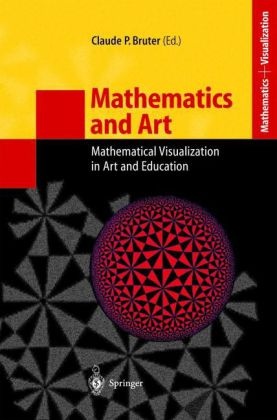En savoir plus
Recent progress in research, teaching and communication has arisen from the use of new tools in visualization. To be fruitful, visualization needs precision and beauty. This book is a source of mathematical illustrations by mathematicians as well as artists. It offers examples in many basic mathematical fields including polyhedra theory, group theory, solving polynomial equations, dynamical systems and differential topology. For a long time, arts, architecture, music and painting have been the source of new developments in mathematics. And vice versa, artists have often found new techniques, themes and inspiration within mathematics. Here, while mathematicians provide mathematical tools for the analysis of musical creations, the contributions from sculptors emphasize the role of mathematics in their work.
Table des matières
From the contents:
- C.P. BRUTER: Presentation of the Colloquium. The ARPAM Project
- G. HART: Solid-Segment Sculptures
- K. POLTHIER: Visualizing Mathematics Online
- M. FIELD: The Design of 2-colour Wallpaper Patterns Using Methods Based on Chaotic Dynamics and Symmetry
- M. DEDO: Machines for Building Symmetry
- E. NEUWIRTH: The Mathematics of Tuning Musical Instruments
- Ch.O. PERRY: The Garden of Eden
- J. HUBBARD: Visualisation and Dynamical Systems
- S. CRASS: Solving Polynomials by Iteration
- C. SIMOES: Mathematical Aspects in the Second Viennese School of Music
- M. EMMER: Mathematics and Art: the Films Series
- F. COLONNA: Guided Tours of Buried Galleries
- Y. HELLEGOUARCH: A Mathematical Interpretation of Expressive Intonation
- J. ROBINSON: Symbolic Sculpture - Forum: How Art Can Help the Teaching of Mathematics
- D. TERMES: Getting out of the Box and into the Sphere
- F. APERY: Constructing Wire Models
- J. SULLIVAN: The Optiverse and Other Sphere Eversions
Résumé
Recent progress in research, teaching and communication has arisen from the use of new tools in visualization. To be fruitful, visualization needs precision and beauty. This book is a source of mathematical illustrations by mathematicians as well as artists. It offers examples in many basic mathematical fields including polyhedra theory, group theory, solving polynomial equations, dynamical systems and differential topology.
For a long time, arts, architecture, music and painting have been the source of new developments in mathematics. And vice versa, artists have often found new techniques, themes and inspiration within mathematics. Here, while mathematicians provide mathematical tools for the analysis of musical creations, the contributions from sculptors emphasize the role of mathematics in their work.
Texte suppl.
From the reviews:
"This book gives a summary of a Colloquium held in Maubeuge (France) in September 2000. The Colloquium was based on the relations between Arts and Mathematics (in particular, on the art of visualization of mathematics), and contained a collection of 27 talks given by artists as well as mathematicians … . An Appendix of more than fifty pages at the end of the book shows beautiful pictures of models, sculptures and computer graphics linked to the papers discussed. A beautiful book!" (I. Pola, Nieuw Archief voor Wiskunde, Vol. 5/4 (4), 2003)
"This book contains the proceedings of a Colloquium on Mathematics and Art held in Maubeuge (France) in September 2000. … The References give a comprehensive list of sources for further study and most papers refer to websites which widen the reader’s appreciation of the topic. … Readers … will find some of the themes and related material developed in the book of interest. Some readers will find considerable value in having the book as a reference." (W. P. Galvin, The Australian Mathematical Society Gazette, Vol. 30 (2), 2003)
"This book must have been a delight to put together. It contains 28 essays by 25 authors from 8 countries, and covers at least 5 disciplines (mathematics and art, of course, but also computer science, film and music). … The strength of this collection of works is that it comes from a collection of talented people who have a lot to say on the subject of visualization in mathematics and art." (Annalisa Crannel, MAA Online, April, 2003)

